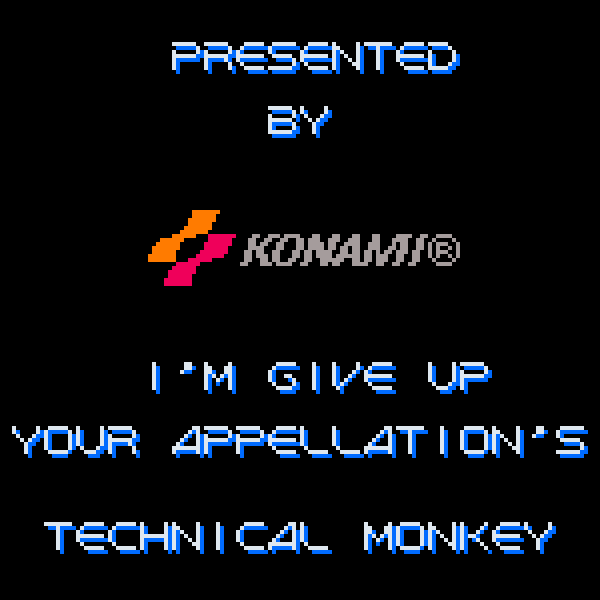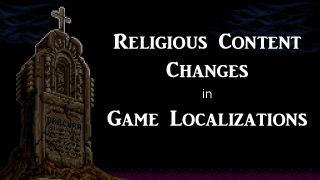Fergzilla sent in a question about the incredible Famicom game, Takeshi’s Challenge:
Recently, YouTube reviewer and former Game Grump JonTron has reviewed an oddball and insane Famicom game called Takeshi no Chousenjou, or Takeshi’s Challenge, which can be watched here. During his review, about 03:41 in the video, Jon noted a rather strange line of text written as “GRILLED MORMONS” and shifted to a short skit where he consults the Broble.
Given that he recorded footage of an amateur fan translation of the game, I’d normally chalk that line up to poor mistranslation. But given the unorthodox nature of Takeshi’s Challenge, I wouldn’t be surprised if the line actually intended to literally mean “grilled Mormons” in the original Japanese script.
Can you give some insight on the mysterious “grilled Mormons” sign? Is it a mistranslation as a result of misspelling or one word having more than one meaning? Or are Taito and Beat Takeshi really that insane enough to suggest such a name for a building in a video game?
I love Takeshi’s Challenge and I loved the JonTron episode of it – if you’ve never seen much about the game, you HAVE to see it here:
Anyway, as mentioned, he plays an English fan translation of the game, and at one point he comes across a building that says “GRILLED MORMONS”. Here’s the building in both Japanese and in English:
 |  |
| Takeshi's Challenge (FC) | Takeshi's Challenge (fan translation) |
When translated literally, it does indeed say “grilled Mormons” in the Japanese version, but it’s actually a joke that’s just a simple play on words:
- There are restaurants in Japan that serve beef and pork offal – this food is called “horumon”.
- The sign in this game basically switches the “h” part of “horumon” to an “m” to get “morumon”, or “mormon”.
- As a result, the sign says something roughly like “grilled mormon” instead of “grilled offal”.
 |
Overall, it’s a pretty basic joke – it’d be roughly like calling a hamburger a “hambooger” or calling a “fried chicken” shop a “fried wiccan” shop. Or, if you wanted to stay closer to the original and go the change-a-single-letter route, a lousy “hot dog” shop might become a “rot dog” shop, for example. Those are all terrible ideas, but you get the idea, hopefully 😛
Anyway, in Japanese, this “grilled mormon” thing is a pretty obvious, simple little joke, but when translated literally into English like this, “GRILLED MORMONS” just seems to come out of nowhere and seems to have absolutely no connection to anything – it makes no real sense for it to be there. Ideally it would’ve been better to localize the sign, but Takeshi’s Challenge IS meant to be pretty crazy, so it still fits the mood of the game. In any case, that’s the cause for the confusion among fan translation-players – it’s just a literal, unlocalized joke.






And now the only question that remains is if it’s ethical to eat grilled Mormons.
Hmmm, I actually know quite a few Mormons who did their mission in Japan. I wonder what they’d make of this in the game. I also wonder what could have happened to Beat Takeshi to warrant such a joke.
Actually, my brother went on a mission to Japan. He laughed all the days XD
Yeah, that’s actually a good point – I hadn’t thought of that. My guess is that maybe the Mormons got really active there during the boom in the 80s and so the name became a household word or something.
please don’t eat me
Butbut…
I bought the salt and ketchup already, and the barbecue is lit!
I guess it’s too late now then!
Well, down the hatch then, I guess.
Just pray I don’t give you the trots >:D
Here’s a question for Mato – In the video, how did JonTron’s Japanese sound? Was it natural-sounding enough? Were there any obvious grammar mistakes? I remember from a couple of Game Grumps episodes that Jon can barely read a few words in kana if he concentrates, but I suppose those Grumpisodes were a while ago.
Ooh, ooh! I’d like to know this as well. Speaking as someone who doesn’t know much Japanese, he sounds pretty fluent, but I suppose there’d be a difference between SOUNDING fluent and actually being fluent.
It’s actually surprisingly good for someone who doesn’t know Japanese – I assume he had pronunciation guidance from someone when recording it. From what I recall, the Japanese itself was okay and sounded like it might’ve been written by someone else for him.
Perhaps an equivalent English pun could be something like “Pork AWFUL”. Geddit? Haw haw haw….I’ll show myself out…
I think of Arino, Inoko MAX, and Nakayama singing Rainy Shinkaichi during the karaoke part of this game during the live two-hour special of Game Center CX a lot.
Haha, I was thinking of Game Center CX too. Gotta love that show!
Oh man, I can’t remember if I’ve seen that special or not. I’ve had a GCCX overload over the years :O
Haha, yes. That was a fantastic episode. A game that odd is a perfect fit for the show.
Soooooo…. What’s an Offal?
Organ meat. Kidneys, liver, etc. In English in particular it often refers to the digestive tract: stomach, intestines, etc.
Yep, it’s organ meat and such: http://en.wikipedia.org/wiki/Offal
I’m guessing that one passed by RHDN members, as I recall using a RHDN thread to get the sings translated. We did get one sign localized though.
パチンコ玉玉デル with the “pa” turned 90 degrees counter-clockwise.
I remember asking in a RHDN thread, someone suggested “Dick’s Ball-Busting Pachinko Parlor”, though I had to shorten it to Dick’s Pachinko.
The problem with the signs is that they are stored as 16×16 metatiles. I remember definitely running low though. Even the location names displayed at the top of the screen inside buildings are actually map data. That is also why one location is spelled “Air Port”.
Ha, I hadn’t realized that you were behind the patch, although I do faintly remember that post you mention with the sideways kanji. That’s cool – your patch is famous now!
Actually, looking at that thread again I think I see a lot of similar puns/jokes that didn’t get noticed. I’m not sure how the final patch turned out, it’s possible you fixed them at some point, but for instance the 極東 in 極東興業 might also have some yakuza connotations, which might even fit the 愛人 picture in the boss’s office. With things like 八百長 in there and やくざ vs. やくざ, it seemed to be a big theme of the game, which fits Beat Takeshi’s love for yakuza/gangster stuff now that I think about it.
Also, I’m not really sure how the karaoke works. That is if it’s timed to the lyrics or anything (I just used the code to enable controller 2 to substitute for the mic and mash A.)
If I had known more on that (and if I knew anything about sound) I might’ve hacked it to occasionally Rickroll the player. 😀
I -think- the songs are made up of sequences of points where it needs to either register a sound or not register a sound. Every time you repeat the song, these points increase in length, meaning your timing has to be more and more exact, so failing on the third performance and having to start over again is common.
Off topic: I saw your name in the credits for Attack on Titan tonight, just as you said. 😀
Cool!
We greatly appreciate your work on the show. =D
As an exmormon, I somehow feel I dodged a bullet.
*sigh* Why even mention that you are an ex-Mormon if you’re not trying to start some sort of
religious flamewar in the comments? That’s how it usually starts, you know. Someone leaves a supposedly innocuous comment and all he’ll breaks loose.
*hell
Stupid autocorrect.
Well, let’s not jinx it either, and just appreciate some black comedy 😛
Would you ever like to do a translation patch for Famicom Dectective Club Part I and 2 on the Famicom Disk System?
I’d love to, but I don’t have the time for such major projects anymore 🙁
Here’s an odd question for you – there are 2 DS Japan-only fighting games – Jump Super Stars and Jump Ultimate Stars – that serve as Smash-style crossovers with Shounen Jump manga characters. The games were obviously both very difficult to license for a Western release and very popular with importers – and the second game, Jump Ultimate Stars (I haven’t played Super Stars, but it’s apparently got a lot less of this), seems like it was partially designed with importers in mind – a lot of the UI has either easy-to-understand icons or Engrish text accompanying the Japanese, and the menus are generally pretty easy to “feel around” otherwise. In your view, could this plausibly be a deliberate choice on the part of Nintendo and Ganbarion, noticing the first game’s popularity in the import market? I know the import market was at least significant enough to lead to the localization of many manga series that appeared in it, most notably Hoshin Engi.
It’s possible it’s because of the number of importers, but it’s also pretty common/normal for Japanese games to have mostly-English UIs. In fact, I was reading a Japanese article the other month about how Western developers who don’t know this put out odd-feeling releases where EVERYTHING, including UI text, is translated into Japanese. I wish I could find the article again, but basically English UI text in Japanese games feels perfectly normal after all these years.
Best Buy actually sold import versions of at least one of those Jump games, freakin Best Buy!